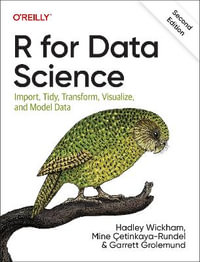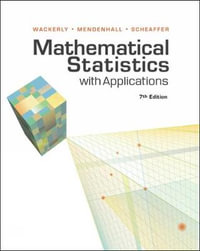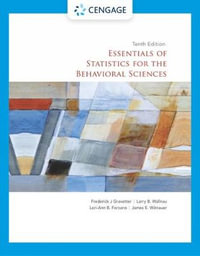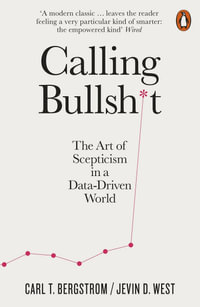| Recruitment in Multicentre Trials: Prediction and Adjustment | p. 1 |
| Introduction | p. 1 |
| Recruitment modeling | p. 2 |
| Prediction of recruitment | p. 3 |
| Adaptive adjustment | p. 6 |
| Study design | p. 7 |
| References | p. 8 |
| Optimal Design of Pharmacokinetic Studies Described by Stochastic Differential Equations | p. 9 |
| Introduction | p. 9 |
| Models | p. 10 |
| Optimal designs | p. 12 |
| Discussion | p. 16 |
| References | p. 16 |
| Comparisons of Heterogeneity: a Nonparametric Test for the Multisample Case | p. 17 |
| Introduction | p. 17 |
| Permutation tests for heterogeneity: two-sample case | p. 18 |
| The multisample case | p. 21 |
| Simulation study | p. 22 |
| Conclusions | p. 22 |
| References | p. 24 |
| On Synchronized Permutation Tests in Two-Way ANOVA | p. 25 |
| Introduction to synchronized permutations | p. 25 |
| Constrained and unconstrained synchronized permutations | p. 27 |
| Correlation between test statistics | p. 29 |
| Power comparison | p. 30 |
| References | p. 31 |
| Optimal Three-Treatment Response-Adaptive Designs for Phase III Clinical Trials with Binary Responses | p. 33 |
| Introduction | p. 33 |
| Optimal design for three treatments | p. 35 |
| Implementation and simulation | p. 37 |
| Conclusions | p. 39 |
| References | p. 40 |
| One-Half Fractions of a 2++3 Experiment for the Logistic Model | p. 41 |
| Introduction | p. 41 |
| Logistic Models | p. 42 |
| Local D-optimal one-half fraction of 2++3 experiments | p. 43 |
| Classes of one-half fractions of 2++3 experiments | p. 45 |
| Conclusions | p. 48 |
| References | p. 48 |
| Bayes Estimators of Covariance Parameters and the Influence of Designs | p. 49 |
| Introduction | p. 49 |
| Bayes invariant quadratic unbiased estimators (BAIQUE) | p. 51 |
| Sufficient conditions for a symmetric matrix A | p. 53 |
| The influence of the design on the Bayes risk | p. 55 |
| References | p. 56 |
| Optimum Design for Correlated Fields via Covariance Kernel Expansions | p. 57 |
| Introduction | p. 57 |
| Expansion of the covariance kernel | p. 58 |
| Design for the estimation of trend | p. 59 |
| Examples | p. 61 |
| References | p. 66 |
| Generalized Probit Model in Design of Dose Finding Experiments | p. 67 |
| Generalized probit model | p. 67 |
| Optimal design | p. 69 |
| Simulation | p. 71 |
| Conclusion | p. 72 |
| References | p. 73 |
| Optimal Design of Bell Experiments | p. 75 |
| Introduction | p. 75 |
| Bell-type experiments | p. 76 |
| GHZ paradox | p. 79 |
| GHZ experiment | p. 80 |
| How to compare different experiments | p. 80 |
| Kullback-Leibler divergence and statistical strength | p. 81 |
| Conclusions | p. 82 |
| References | p. 82 |
| A Comparison of Efficient Designs for Choices Between Two Options | p. 83 |
| Introduction | p. 83 |
| Models | p. 84 |
| Designs for estimating main effects | p. 86 |
| Interactions | p. 89 |
| Concluding remarks | p. 89 |
| References | p. 89 |
| D-optimal Designs for Logistic Regression in Two Variables | p. 91 |
| Introduction | p. 91 |
| Preliminaries | p. 92 |
| D-Optimal designs | p. 93 |
| Conclusions | p. 97 |
| References | p. 98 |
| Design of Experiments for Extreme Value Distributions | p. 99 |
| Introduction | p. 99 |
| Designs for regression of extremes | p. 100 |
| Strength of materials | p. 102 |
| Conclusions | p. 105 |
| References | p. 105 |
| A Model Selection Algorithm for Mixture Experiments Including Process Variables | p. 107 |
| Models for Mixture experiments with process variables | p. 107 |
| Homogeneous representation of a mixture experiment | p. 108 |
| A model selection algorithm | p. 110 |
| Final Comments | p. 113 |
| References | p. 114 |
| D-optimal Designs for Nonlinear Models Possessing a Chebyshev Property | p. 115 |
| Introduction | p. 115 |
| Locally D-optimal designs | p. 118 |
| Maximin efficient designs | p. 119 |
| References | p. 122 |
| A New Tool for Comparing Adaptive Designs; a Posteriori Efficiency | p. 123 |
| Introduction | p. 123 |
| A-posteriori and mean a-posteriori efficiencies | p. 125 |
| Efficiencies | p. 126 |
| Example | p. 129 |
| Conclusion | p. 129 |
| References | p. 130 |
| Optimal Cutpoint Determination: The Case of One Point Design The | p. 131 |
| Introduction | p. 131 |
| The Formal Problem | p. 132 |
| Some Design Objectives | p. 132 |
| Two category case | p. 133 |
| One point designs: k categories | p. 135 |
| Results | p. 136 |
| Future work | p. 138 |
| References | p. 138 |
| D-Optimal Designs for Regression Models with Length-Biased Poisson Response | p. 139 |
| Introduction | p. 139 |
| Model and notation | p. 140 |
| Information matrices for biased response | p. 141 |
| Locally D-optimal designs for length-biased Poisson response | p. 143 |
| Concluding remarks | p. 145 |
| References | p. 146 |
| Efficient Sampling Windows for Parameter Estimation in Mixed Effects Models | p. 147 |
| Introduction | p. 147 |
| Population experimental Design | p. 148 |
| Optimum population design | p. 149 |
| Efficient sampling windows | p. 151 |
| Example | p. 152 |
| Conclusions | p. 154 |
| References | p. 155 |
| Quantile and Probability-level Criteria for Nonlinear Experimental Design | p. 157 |
| Introduction | p. 157 |
| Evaluations of criteria and their derivatives | p. 160 |
| Example | p. 161 |
| Conclusions and further developments | p. 163 |
| References | p. 164 |
| Optimal Designs for the Exponential Model with Correlated Observations | p. 165 |
| Introduction | p. 165 |
| Statement of problem | p. 166 |
| Locally D-optimal designs | p. 167 |
| Maximin efficient D-optimal designs | p. 170 |
| References | p. 171 |
| Determining the Size of Experiments for the One-way ANOVA Model I for Ordered Categorical Data | p. 173 |
| Introduction | p. 173 |
| The ANOVA model | p. 174 |
| Ordered categorical variables and the relative effect | p. 175 |
| Relation between sample sizes for normally distributed variables and categorical variables | p. 176 |
| References | p. 180 |
| Bayesian Ds-Optimal Designs for Generalized Linear Models with Varying Dispersion Parameter | p. 181 |
| Introduction | p. 181 |
| The experimental matrix and the standardized variance for the JMMD | p. 182 |
| Ds-Optimality | p. 183 |
| Example: application to the coffee industry | p. 186 |
| Final considerations | p. 187 |
| References | p. 188 |
| Some Curiosities in Optimal Designs for Random Slopes | p. 189 |
| Introduction | p. 189 |
| The model | p. 190 |
| Optimal design | p. 191 |
| Discretisation | p. 194 |
| Discussion | p. 194 |
| References | p. 195 |
| The Within-B-Swap (BS) Design is A- and D-optical for Estimating the Linear Contrast for the Treatment Effect in 3-Factorial cDNA Microarray Experiments | p. 197 |
| Introduction | p. 197 |
| Notations and Examples | p. 198 |
| A- and D-optimality of the BS design | p. 201 |
| Conclusions and discussion | p. 203 |
| References | p. 204 |
| D-Optimal Designs and Equidistant Designs for Stationary Processes | p. 205 |
| Introduction | p. 205 |
| M (n) structure | p. 208 |
| Mr (n) structure | p. 210 |
| Discussion | p. 211 |
| References | p. 211 |
| Optimal Designs for Discriminating among Several Non-Normal Models | p. 213 |
| Introduction | p. 213 |
| The Generalized KL-Criterion | p. 214 |
| An example | p. 217 |
| References | p. 220 |
| Optimal Orthogonal Three-Level Factorial Designs for Factor Screening and Response Surface Exploration | p. 221 |
| Background | p. 221 |
| Design Criteria | p. 223 |
| Optimal 18-run and 27-run orthogonal designs | p. 224 |
| Concluding remarks | p. 228 |
| References | p. 228 |
| List of Contributors | p. 229 |
| List of Referees | p. 235 |
| Index | p. 239 |
| Table of Contents provided by Ingram. All Rights Reserved. |
























